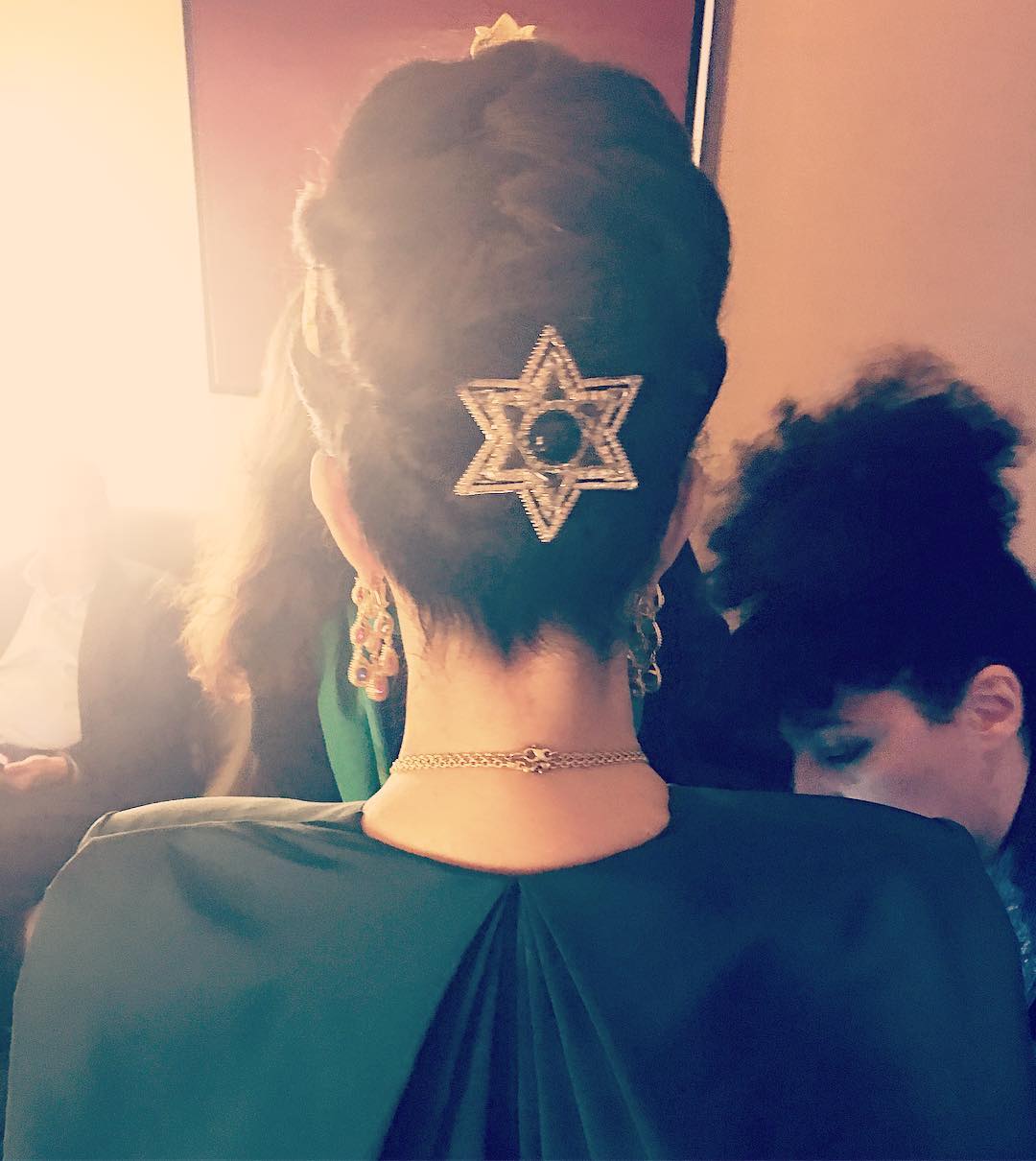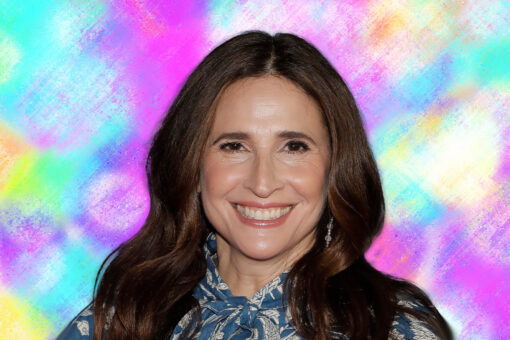In a recent British Vogue piece titled, “Unpicking the 2018 Met Gala Theme,” celebrity stylist Elizabeth Saltzman notes, “It’s important to me to have beautiful gowns on the women I work with, because photographs live longer than the gala. People don’t remember the theme, they just remember the dress.”
Upon seeing what celebrities wore last night, I would find that statement rather hard to believe. There were many ways a stylist or designer could have interpreted the 2018 theme, Heavenly Bodies: Fashion and the Catholic Imagination, yet it would be foolish to believe that the most over-the-top thematic ensembles are not the most memorable.
The unforgettable from last night also happen to be the most religious: Katy Perry in Versace and 10-foot-tall angel wings; Cardi B in gem-encrusted Moschino and a headpiece straight out of the Sistine Chapel ceiling; and Rihanna, who simply resembled the Pope. (The exception to the trend in religiosity-equals-memorability is Frances McDormand, whose earthly getup actually transcended heaven itself. “Tonight, I’m a pagan,” she said on the red carpet.)
It is easy to make a fashion statement out of garments and accessories that are both clunky and sacred in equal volume. The exhibition itself (which is too oft forgotten amongst the celebrity brouhaha) contains “papal robes and accessories from the Sistine Chapel sacristy… [and] fashions from the early twentieth century to the present,” according to a release on the Met’s website.
In another article, Andrew Bolton, the Costume Institute’s Curator in Charge, writes:
Although some might regard fashion as a frivolous pursuit far removed from the sanctity of religion, most of the vestments worn by the secular clergy and religious orders of the Catholic Church actually have their origins in secular dress.
That all being said: When a non-Catholic is invited to the baptism of the fashion world, what is she to wear?
I’m not sure I would dress as papal-y as Rihanna because I personally wouldn’t love if a famous man showed up to a party recreating Moses in Versace. Likewise, Fabiola Beracasa Beckman, a film and television producer, said last night of her attire, “This is a Dolcé Alta Moda dress that I own and I’ve worn before, because that’s what clothes are for, especially nice clothes. What’s interesting is that I’m actually Jewish. I didn’t wear any crosses, because I thought that might be crossing the line — no pun intended — so I decided to go more virginal.”
Many Jewish attendees’ outfits (as well as those outfits designed by Jews) recalled medieval art more than Catholic religion. This is what Bolton, the aforementioned curator, refers to as the “Catholic Imagination”: “On the surface, this [Catholic] influence is apparent in their use of explicit Christian symbolism such as the cross and the crown of thorns, but on a deeper level, it expresses itself through the designers’ reliance on narrative or storytelling, and specifically on the trope of metaphor,” he writes.
For Zoë Kravitz, a Jew in Saint Laurent, this meant the presentation of the body itself:
Upon first glance, it seemed as though Tracee Ellis Ross, another Jew, was leaning more Rajneesh than she was Catholic. Yet, she later stated via Instagram and Twitter, “My #MetGala look was inspired by the third Sunday of Advent, Gaudete Sunday, when Catholic priests wear rose robes at Mass to rejoice and celebrate Lent.”
Jewish designers, like Zac Posen and Diane von Furstenberg, took alternate routes. Von Furstenberg dressed herself in a dress that looked like a painted sky. Jourdan Dunn, in DVF, wore a dress named “Queen of Sheba,” after the biblical royal who came to King Solomon’s Jerusalem “with camels bearing spices, and very much gold, and precious stones.”
Yet Posen’s pièce de résistance was Lynda Carter, the woman who played the original Wonder Woman. “I wanted to create something that spoke to the theme, but to all religions, and use different shapes that are powerful and show a cross section of beliefs,” Posen said of her dress. So there stood Lynda Carter — raised Catholic, married Jewish, kids bar mitzvahed — in a Zac Posen gown and crown to replace the superhero headband she’s used to wearing. On the coronet was the Hebrew inscription, “l’olam al tishkachi,” or “never forget,” in future-female tense. Just above the nape of her neck, she wore a six-point star barrette, akin to the Star of David.
Many say that Lynda Carter took home the crown, both literally and figuratively, but it is quite clear that, as goes in the western world, none compare to the Pope. This is especially true when the Pope is Rihanna.
I have always aspired to be invited to the Met Gala, though that yearning has waned as the internet produces more and more negative content about the night. Supposedly, you only have fun if you go into the bathroom and smoke cigarettes, but I’m not one for smoking and the thought of being in a very small space with a number of famous and beautiful people is more daunting than the idea of the event itself, where I would be in a larger space with even more famous and beautiful people.
That anxiety, however, will never successfully kill my favorite daydream: the question of what will I wear? For now, I suppose, I will shelve it next to my other musings on what might make a nice wedding gown. Either way, I know it will not involve a wreath of thorns.
Header image via Lynda Carter’s stylist Ann Caruso on Instagram.



